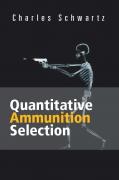I don't have a way to determine the Brinnel number of a lead. Actually, I had to look it up to be sure I spelled Brinnel properly.
When a bullet is advertised as "hard cast" is there a simple way to determine if it is? Even if it was only a way to compare one against another, that would be useful.



 Reply With Quote
Reply With Quote


